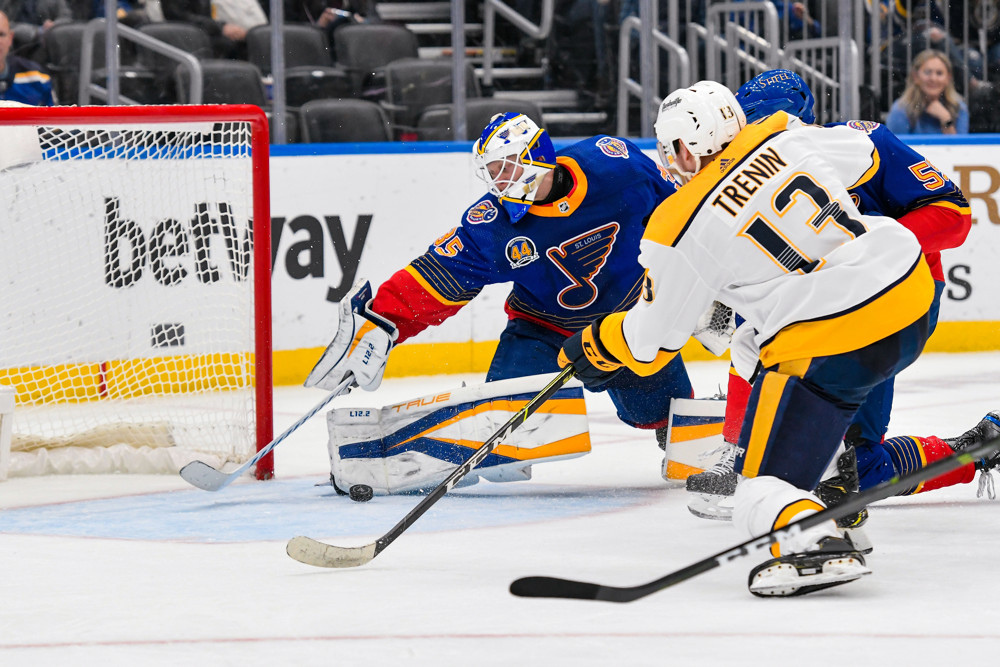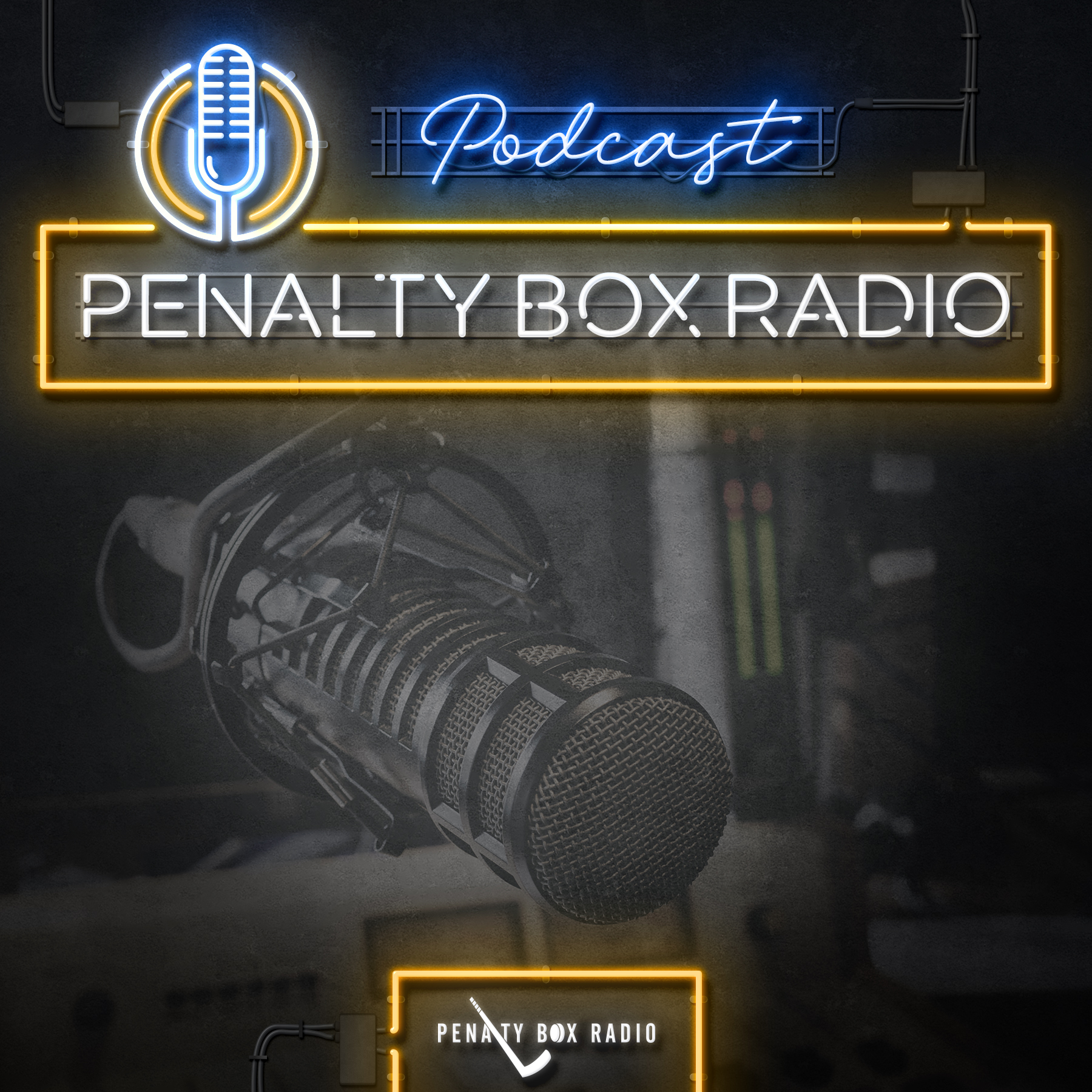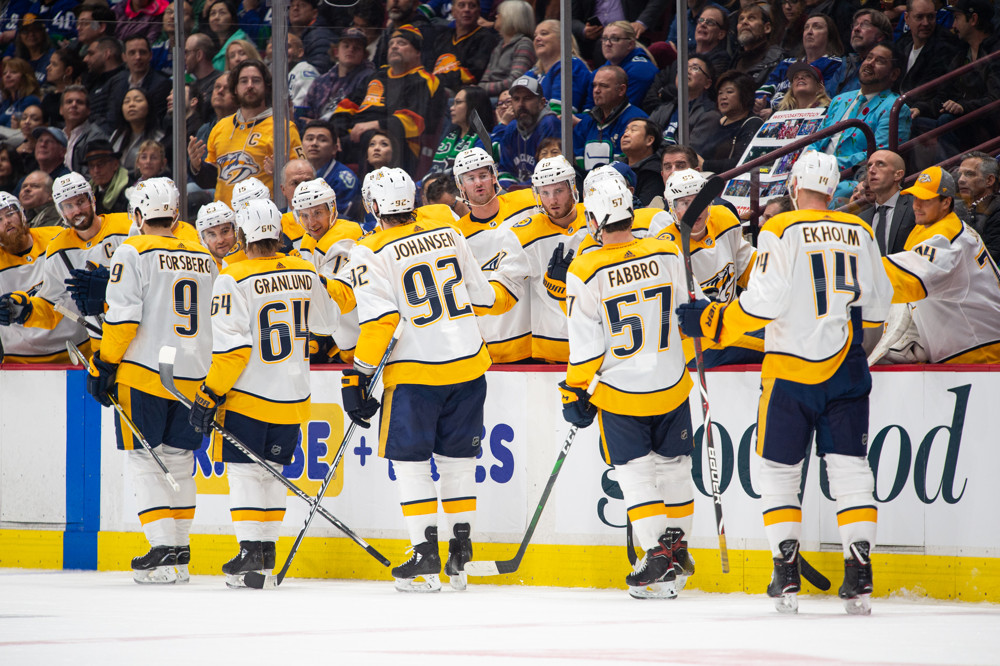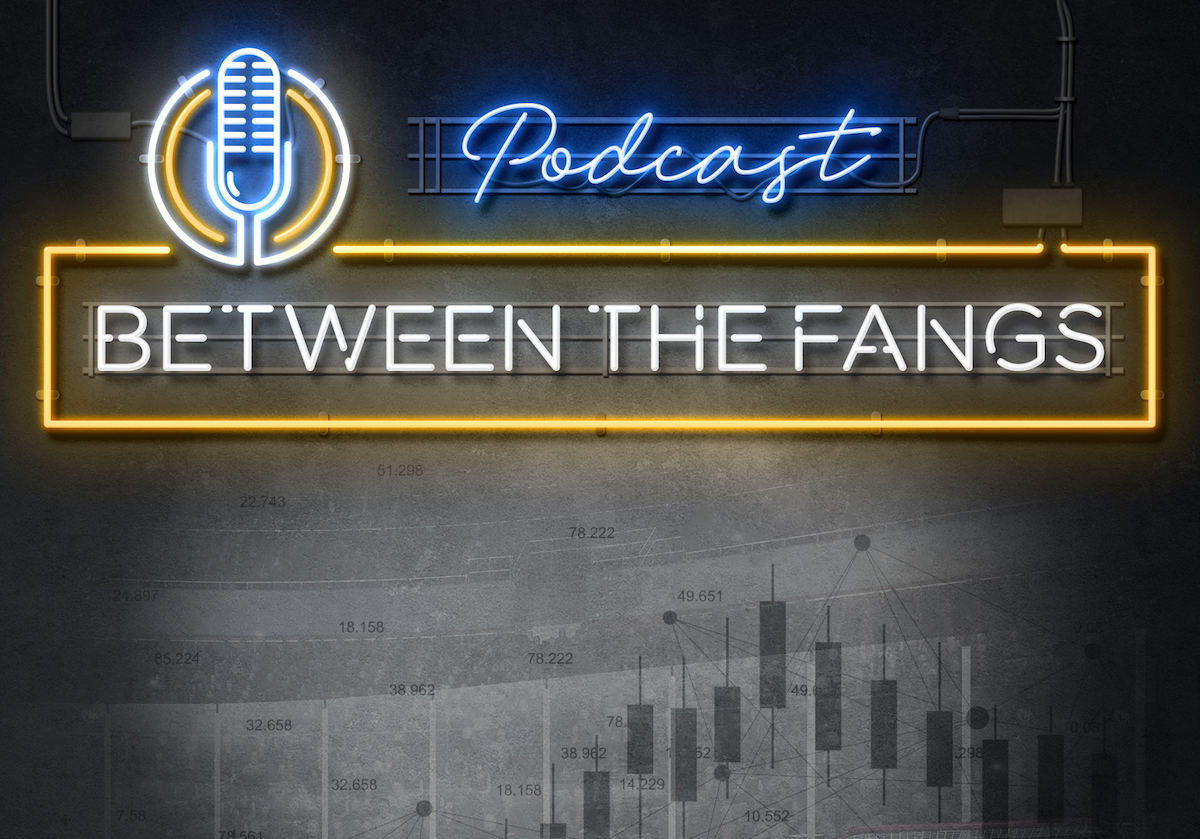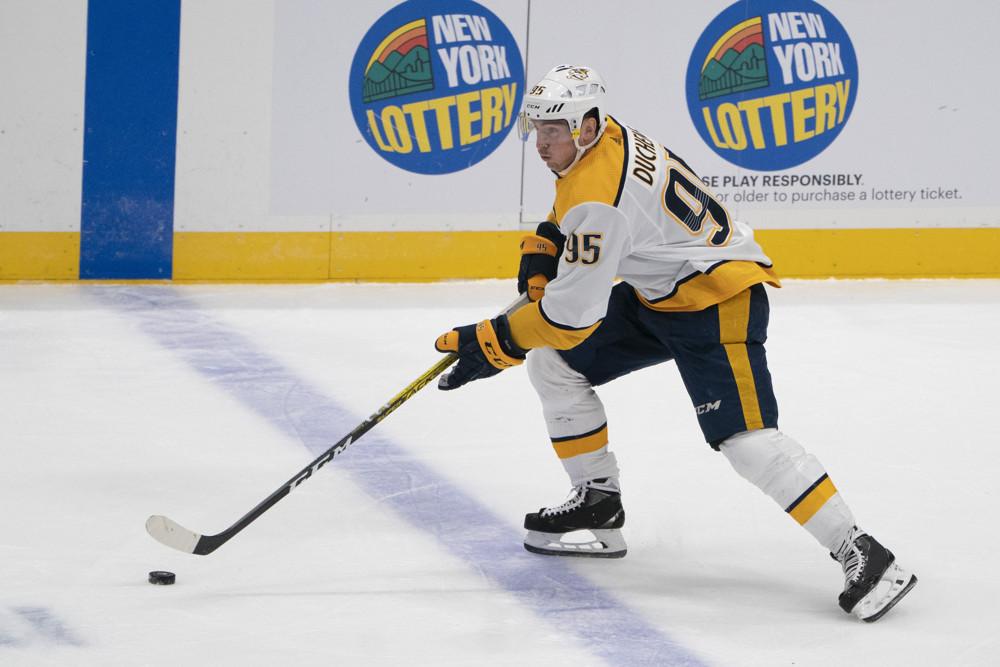
As the eleventh hour of the 2019 trade deadline approached, Predators fans would be forgiven for having concerns. Each of the primary (unofficial) trade targets for the team had seemingly passed them by. Instead of dealing Artemi Panarin, Columbus made its winning intentions clear by bolstering their roster with Matt Duchene. Mark Stone, it was rumored, was heading to Vegas. Even secondary figures like Kevin Hayes, Ryan Dzingel, and Gustav Nyquist had been dealt.

Fortunately, David Poile came prepared with a solid contingency plan. Around 1:30pm, he made his big move of the day: the Predators plucked Mikael Granlund from division rival Minnesota. Shortly after, they finally added Wayne Simmonds after several months of speculation.
While Nashville is not the new home of any superstars, it was a successful day for the team. They added two undoubtedly positive pieces, losing no prospects or premium draft picks in the process.
Of course, the additions were not free. Philadelphia charged one Ryan Hartman and a conditional draft pick. Paul Fenton’s Minnesota Wild received Kevin Fiala in their heroic quest to become “Predators Lite.”

Opinions of Kevin Fiala have certainly soured over the year, but the 22-year old still represented Nashville’s primary developing talent. Even after a relative production drought as of late, Fiala boasted roughly half a point per game in his total time with the Predators. His not-uncommon flashes of brilliance suggest that he is capable of sustained breakout performances in the near future.
Nashville, though, is not in a position to be patient. With the Predators’ entire roster at peak or declining performance, their much-celebrated cup window is beginning to close. Especially after several months of sputtering around the standings, the floor was starting to get awfully hot.
First things first, Mikael Granlund is not Mark Stone. In fact, you can probably count the number of players comparable to Stone on one hand. For such a valuable player, Vegas traded arguably the league’s best defensive prospect to Ottawa. Nashville simply couldn’t match the offer.
Granlund, though, is a perfectly acceptable consolation prize.

One-for-one trades, especially those involving two players of the same position, allow for somewhat direct comparisons. For Nashville, a team that needs to win right now, let’s address the following questions:
- What will Granlund’s impact be at both ends of the ice?
- Where will Granlund fit into the lineup?
- How do Granlund’s current impacts compare to Fiala’s?
What will Granlund’s impacts be at both ends of the ice?

Mikael Granlund has been a regular member of Minnesota’s first line, spending the majority of his recent time with Jason Zucker and Eric Staal. They’ve been a dominant trio by pretty much any metric, with Granlund contributing impressively.
Hockeyviz.com, run by Micah Blake McCurdy (@ineffectivemath) features a really helpful heatmap tool for visualizing a player’s individual impact. Micah explains his player isolation process in detail here.

Viewed side-by-side, these maps paint an extremely promising picture for Mikael Granlund’s offensive influence. His isolated presence on the ice improves the shooting rate of his team by nearly 20%, relative to league average.
This kind of impact is somewhat expected for a first line winger though. It’s not uncommon for a winger to struggle defensively, and those who succeed in both zones are worth their weight in gold. Again, we turn to hockeyviz.com.


Minnesota has put on a convincing defensive show this season. Granlund’s presence does improve opposition shooting threat, but the high-danger scoring areas are still a lovely shade of blue. Nashville is quite a bit closer to league average in the defensive zone, so this apparent weakness of Granlund’s game might be more exposed.
Overall, Granlund will have a positive impact on the ice. His defensive game isn’t as sharp as some of the other trade options, but his offensive impact will likely make up for it.
Where will Granlund fit into the lineup?
Considering his potential defensive concerns this season, Mikael Granlund’s position in the forward lines presents both a dilemma and an opportunity.

More likely than not, he will spend most of his time alongside Kyle Turris and Craig Smith. These two don’t exactly represent a stalwart defensive duo. Even with an overwhelmingly offensive deployment, they have struggled to convincingly move the possession needle in Nashville’s favor.
This, of course, presents the dilemma. Adding a (slightly) negative defensive element to a line already struggling in that area seems risky.
On the other hand, Granlund has been facing a much more even zone deployment than Nashville’s second line. Over the past several seasons, his zone starts have been roughly 50/50 between the offensive and defensive zones. Upon joining Turris and Smith, he will face a much friendlier assignment.
What’s more, Granlund will be expected to feature on one of Nashville’s two power play units. I’m certain you’re already aware of the scoring void that is Nashville’s power play. At this point, even if Granlund had zero special teams experience, he’d still be worth trying. The situation is the absolute definition of “it can’t hurt.”

Fortunately, Granlund does have special teams experience. Over the course of his career, he’s been very successful in power play situations. In fact, our old friend Micah Blake McCurdy figures his isolated shooting impact to be 15% in the right direction.
This season, his impact has been more or less nullified by Minnesota’s relatively poor power play. Yes, they’ve converted on 21.6% of their opportunities, but there’s evidence of it benefitting from poor goaltending. It’s possible that he wakes up Nashville’s power play, but history shows that he might not be enough to improve the scoring threat substantially on an otherwise poor unit. This debate will likely be settled soon – considering Nashville sits at an abysmal 12.2% power play conversion rate, he will unquestionably get his chances.
The question when any player joins a new team is whether they will experience a “boost” from their new surroundings. With Granlund, I’d predict at least a slight improvement in his season-long performance. He will have a more offensive role, and joins a team with a much more developed identity than his former. You might scoff at this, given Nashville’s recent lost-puppy appearance on-ice, but their immediate goal is still very well defined: win the Cup now.
How do Granlund’s current impacts compare to Fiala’s?
Overall, it seems that Nashville made a good move on Monday. They acquired a more consistent and well-established top-six forward in a one-for-one trade. For a win-now team, it seems like a recipe for success.
That said, Kevin Fiala, in spite of a relatively down year on the score sheet, was still an important piece of the lineup. Will the effects of his loss be negated by the positive contributions of Mikael Granlund? Let’s take a more historic look.
Over the past three seasons, in terms of total shot attempts (CF%) and unblocked shot attempts (FF%) relative to opponents, Kevin Fiala has actually been the better player. That said, in terms of high-danger scoring chances (HDCF%), Granlund has the advantage. One interpretation here is that Granlund plays more efficiently than Fiala, opting to take fewer low-quality shots himself while forcing opponents to do the opposite.
Context, though, is critical. As I mentioned before, Fiala has spent the majority of his career facing strikingly few defensive zone starts. Through his games over the past three seasons, Fiala has started his shifts in the offensive zone more than 70% of the time. Over the same time period and nearly the same number of games, Granlund’s offensive zone start ratio is less than 50%. No matter how you look at it, that’s a huge difference in responsibility.
Assuming Granlund enjoys something in the ballpark of a 20% decrease in his defensive duties, it’s safe to assume his possession stats will improve nicely.
What should we expect?
Overall, the Nashville Predators are the same team after the deadline as they were before. Neither of their additions are particularly groundbreaking, but both are important. Simmonds and Granlund both will certainly feature in the team’s power play, which has been its most obvious weakness this season.
For many NHL teams, Mikael Granlund would feature on the top forward line. Nashville desperately needs to elevate its depth scoring, starting with the underperforming second line. Replacing a young developing forward with a more established known quantity is risky, but for a team in Nashville’s position, it was the right move. They need consistent production as soon as possible.
With the playoffs rapidly approaching, it’s unclear whether Nashville will have the firepower necessary to compete within the Western Conference. Granlund has the ability to provide the spark that gets line two rolling. If he can do so successfully, it will re-establish the Predators as a dangerous adversary.



